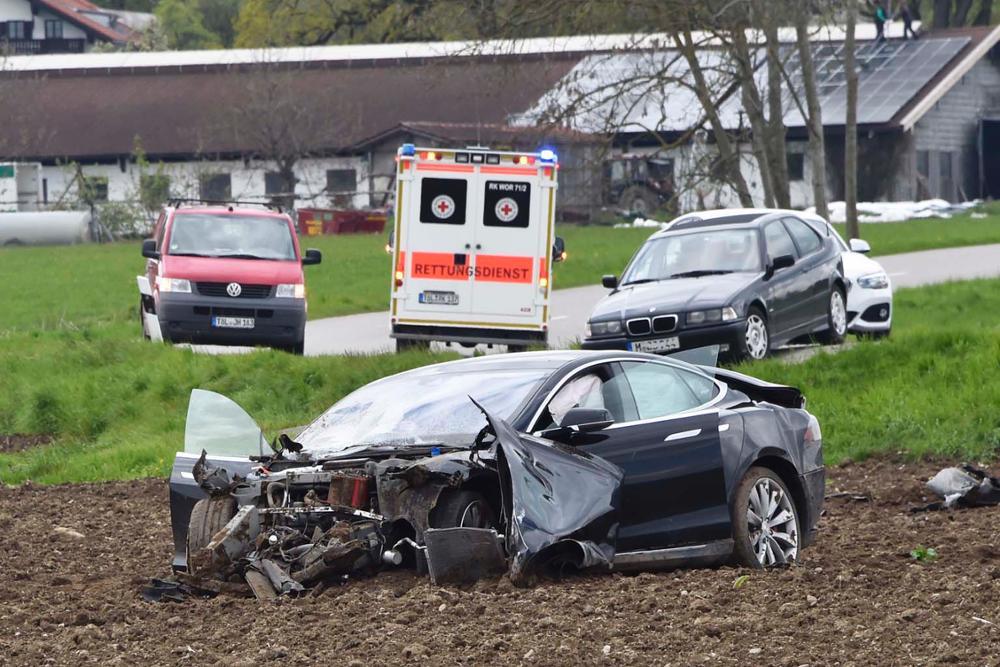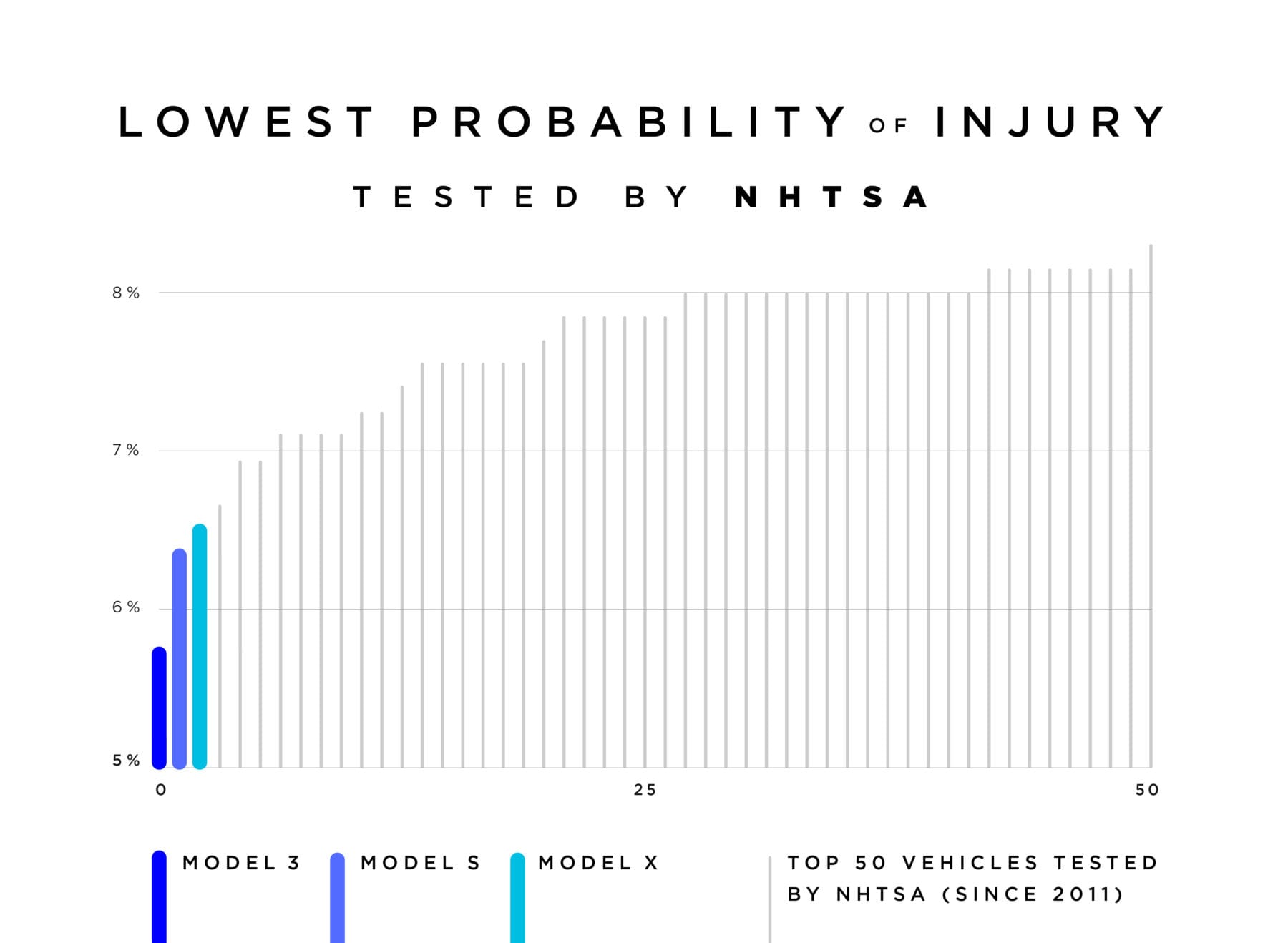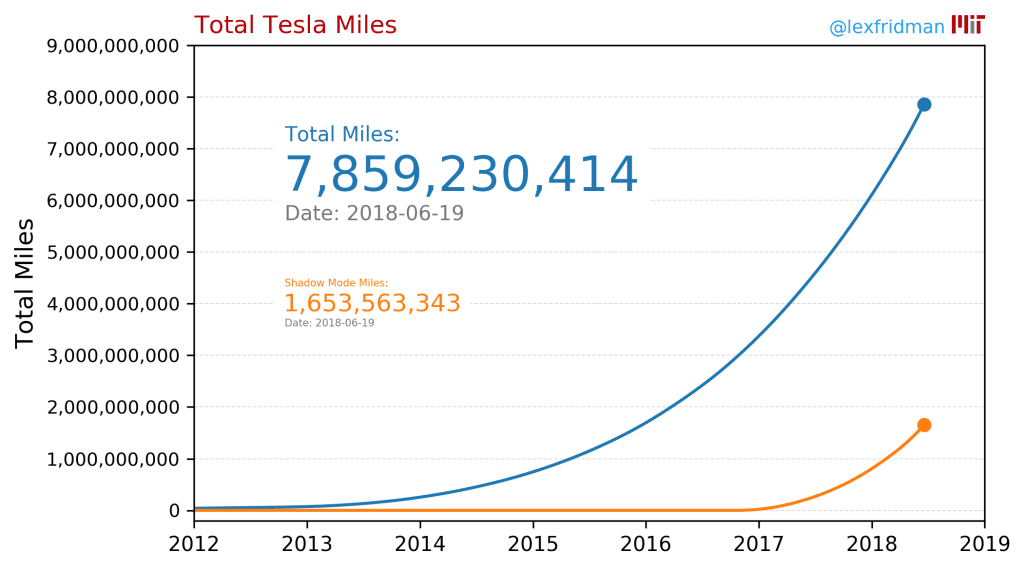Tesla crashes are by no means more common than other manufacturers, yet they always seem to make headlines. Some people consider Tesla and electric vehicles in general to be more dangerous than conventional vehicles, while others claim that Tesla’s Autopilot system and the current state of self-driving tech is the real problem. Is it statistically accurate? Does a certain level of bias play a part in some of these recent claims? Let’s take a quick look at some statistics to determine whether or not all of the scrutiny Tesla is under is warranted.
In the recent Tesla news, headlines were made nationwide about a single fatality in Davie, Florida. A Tesla Model S hit a tree at 75 mph and caught fire. Reports stated that the rescue attempt failed because of the lack of door handles.
All doors unlock automatically when the Tesla comes to a stop after an accident. There is both primary & backup power to doors, brakes, steering & airbags.
— Elon Musk (@elonmusk) January 26, 2019
While many are trying to blame Tesla for their “design flaw”, there’s more to the story. Teslas unlock all doors and the trunk on impact. If the doors are unable to be opened, the next step would be to break a window. It’s no different than a gas car hitting a tree at 75 mph, bending frames, and making the door unable to open. Door handle or not, a bent frame can prevent a door from opening. What is different here is the fire.
Tesla Fires
Once the fire was put out, it reignited a few more times while being towed away. This is a story we hear time and time again as we transition into electric cars. The lithium-ion batteries are nothing like the tradition gas engine. While there’s no statistical proof that electric cars are more susceptible to catching fire, the fires are definitely more dangerous and treated differently.
“A battery powered vehicle having a fire incident is newsworthy. A gasoline powered vehicle having a fire is newsworthy only if it stops traffic,”
When a lithium-ion battery catches fire it can short circuit the battery cells. That heat can then ignite the chemicals and gives birth to a flame. Once the fire is put out, the process can continue to repeat itself until no more battery cells remain. This process is a type of thermal runaway and has the potential to take affect in all lithium ion powered devices. It can take upwards of 24 hours for the fire to fully extinguish. The good news is that a lithium fire takes longer to form than a tradition gasoline car fire, allowing time for the driver and passengers to escape before flames begin to form.
With this specific and recent case in Florida, it’s hard to say what went wrong. We will have to wait until an official report is released to find out whether or not the driver died on impact, if Tesla was at fault, if Autopilot played a part, and so on. This Tesla crash is still believed to be under investigation by the NHTSA.
Statistically, an electric car fire is not more common than a traditional car fire. Tesla even goes as far to say that electric cars are less prone to fires. At the time of their calculations, Tesla claimed they had 7.5 billion miles driven with only 40 fires reported. That’s five fires every billion compared to the traditional car average of 55 per billion miles driven.
This could be the cause of Tesla’s fire prevention measures. The under-body and structure is suited to withhold extreme impact. Each of the 16 battery modules are individually placed in between firewalls. Vents are in place to direct hot airflow and flames towards the ground rather than into the rest of the vehicle, so a major fire is not formed every time a Tesla crashes. Lithium-ion batteries are also found in your phone with minimal protection. If you bend your iPhone, a fire will most likely form as well.
Tesla Crashes
The mainstream media makes it seem like Tesla crashes happen fairly often by reporting on them almost every time one occurs while ignoring all other manufacturers’ crashes. The fact is, Tesla’s claim of having one of the safest cars on the road isn’t statistically impossible.
According to the NHTSA (National Highway Traffic Safety Association), there is one accident for every 492,000 miles driven in the United States.
Since Q3 ’18, Tesla has been releasing a quarterly safety report in which they outline their accident rates both with and without Autopilot. The Q2 ’19 report showed one accident every 3.27 million miles with Autopilot and active safety features engaged and one every 1.41 million without. While Tesla Autopilot failures and accidents are proven to happen, according to the company’s own publicly made data, it significantly reduces the rate at which Tesla crashes occur.
Tesla *with* Autopilot engaged is twice as safe & continues to make steady improvements https://t.co/8dhVPUDeh0
— Elon Musk (@elonmusk) January 10, 2019
Tesla has however faced judgement for comparing their accident rates with NHTSA’s data. The NTHSA includes everything from motorcycles to commercial trucks in their data. If there is data showing annual accidents separating passenger cars from the rest, we were unable to locate it.
Tesla Crash Fatalities
Using IIHS (Insurance Institute for Highway Safety) data, we can accurately compare Tesla’s fatality rate to the average manufacturer’s. The IIHS separates pedestrians, bicycles, motorcycles, etc. from passenger vehicles.
According to the IIHS, there were 17,663 fatalities in 2016. That same year, there were around 1,440,228,000,000 miles driven in the U.S. That gives us an accident rate of 1.22 for every 100 million miles.
Now we don’t have U.S. specific Tesla miles, so we will be comparing worldwide Tesla fatalities and miles to the U.S. statistics, so this data is leaned against Tesla.
The last reported total Tesla miles were back in June of last year. It read 7,859,230,414. At that time, there were 38 total worldwide Tesla fatalities reported. That’s a worldwide rate of .48 Tesla fatalities per 100 million miles compared to the U.S. average of 1.22 every 100 million miles. That means the worldwide Tesla fatality rate per 100 million miles is ~60% less than the U.S. average.
We now stand at reported 76 Tesla fatalities (passengers, pedestrians, and other vehicles included) total with no total mileage update to give a present rate. But what we do know is that since then, Tesla has drastically increased the amount of Teslas on the road by double while also continuing to improve Autopilot and their other active safety features. So far, in 2019, there have only been 14 Tesla related fatalities reported, of which only 7 affected the occupants inside the Tesla.
Is Tesla the Safest Car on The Road?
While many would like to believe so, probably not. But they do stand well above the given averages on a per mile basis. Tesla even claims to hold the lowest probability of injury of every vehicle tested by the NHTSA. The company states to have engineered their cars to be the safest vehicles on the road but who knows if they achieved it. Unless every manufacturer releases their crash data, there’s not real way to state that as fact. All 3 current Tesla models hold 5 star safety ratings in every category in just about every region tested so it’s no question whether or not they’re safe, instead we question the bold claims made.
There have been a few cars produced with an astonishing recording of zero fatalities. None of the Tesla models fall on this list.
So Why is Tesla Scrutinized With Every Accident?
Disrupting a market that took over a century to establish in just a decade has garnered Tesla cult followings of both fans and skeptics. While Tesla doesn’t necessarily deserve their crashes to be outcasted, there’s a few reasons they might be.
Bold Statements
Tesla is the safest car according to US govt testing
— Elon Musk (@elonmusk) January 19, 2019
Tesla has made multiple bold statements with not much to back their claims. They’ve been scrutinized for them as every Tesla crash and fatality discredits them further. The media partially handpicks to report Tesla crashes to show the public that Tesla is spreading misinformation. At least from the perspective of some. Tesla has claimed to have the safest vehicle on the road meanwhile 24 Tesla drivers have died behind the wheel.
Tesla’s Autopilot
All Tesla cars built since Oct last year will be capable of self-driving as software improves
— Elon Musk (@elonmusk) March 24, 2017
Tesla has a feature others don’t, Autopilot. They market it as an autonomous driving feature but in reality, it is currently just an advanced adaptive cruise control system. Others have similar systems, in a sense, but don’t claim it as having the capability for future self-driving. Going back to Tesla’s bold claims, whenever a Tesla Autopilot crash occurs, people question the technology’s potential. They’re skeptical about autonomous driving and Tesla is the automaker most vocal about making it work. Autopilot tech with full self-driving capabilities continue to be spouted as safe yet there’s a crash every 3.27 million miles while under Autopilot. While the low rate is certainly impressive, many would like that number to be zero if they’re going to trust the car with their life. But that tech takes time to perfect and might one day just get there.
As a result, Tesla crashes are looked under a microscope. They’ll continue to be as long as Tesla makes claims setting them above the rest of the industry. Sure, data is in their favor, but there are some that won’t do the research or believe the current numbers aren’t good enough. They’d rather remain skeptical of tech they don’t yet trust. Electric cars and self-driving tech is Tesla’s present but the auto industries future. Tesla is setting the foundation for others while taking safety as a serious concern.
Some would like to claim that Tesla’s are unsafe, prone to fires, and that Autopilot will run you off a cliff. While that all sound great on your TV and new feed, it’s, for the most part, all statistically inaccurate. They might not be able to prove themselves as the safest car on the road, their claims for current Autopilot standards might be a tad bit too high, but facts are facts and Tesla’s are not any less safe than the average car. The company takes major steps to ensure safety even continuously improving older cars by updating their thermal management systems or safety features over-the-air.
“It’s really incredibly irresponsible of any journalists with integrity to write an article that would lead people to believe that autonomy is less safe”
-Elon Musk


